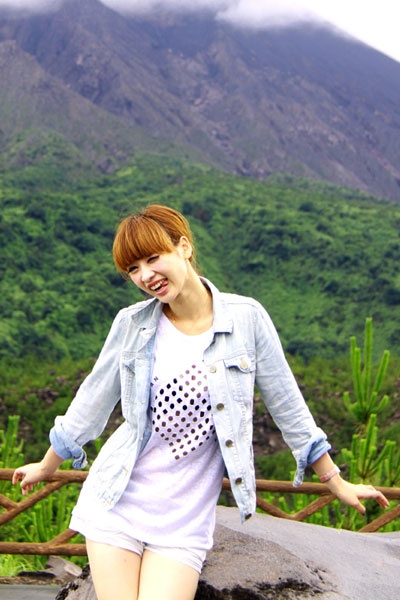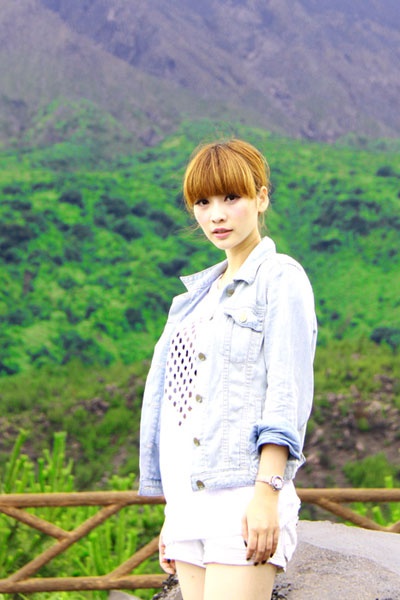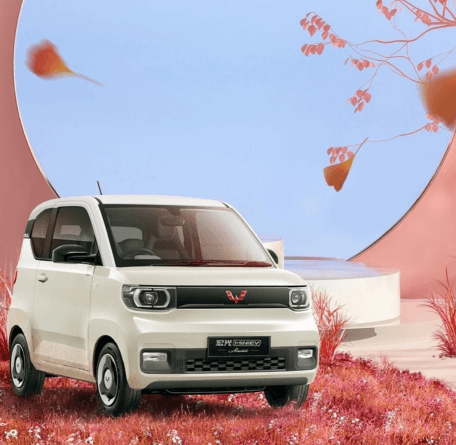Five little dolls set off a big wave, and the business of Olympic Fuwa became louder and louder as she sang.
Businessmen in China in the Southern Weekend have long known that it is necessary to seize business opportunities before it is too late. On November 11th, 2005, less than an hour after the announcement of Fuwa, the mascot of the Beijing 2008 Olympic Games, mascots began to be sold in the Beijing subway. Now, with the approaching of the Olympic Games, enterprises are playing Fuwa cards one after another, and Fuwa’s business is getting louder and louder.
Five little dolls set off a big wave. At the sales point of the Olympic mascots of Gongmei Mansion in Wangfujing, Beijing, the commodities with the theme of "Fuwa", the mascot of Beijing 2008 Olympic Games, can reach more than one million yuan a day on weekends when business is hot. One set of plush "Fuwa" is the best seller, although its price is not cheap, and it is priced in 390 yuan. Clothes, pens, schoolbags and key chains with Fuwa logo are also very popular.
Across the country, there are hundreds of special sales outlets selling Fuwa goods. There are more than 300 kinds of goods.
It is estimated that by 2008, the number of overseas tourists in Beijing will increase to 4.6 million, and during the Beijing Olympic Games in August 2008 alone, the number of foreign tourists may reach about 600,000, and the number of domestic tourists may reach 1.1 million. "Although tourists can’t say that everyone buys mascots, it is very sure that there is more than one per capita." An Olympic mascot marketing research expert said. The "Olympic Fuwa" is composed of five creative images: fish, panda, Olympic flame, Tibetan antelope and Jingyan. Their names are Beibei, Jingjing, Huanhuan, Yingying and Nini, which are homonyms for "Welcome to Beijing". This is the largest number of mascots in Olympic history.
According to the experience of previous Olympic Games, the income of mascots generally accounts for about 10% of the income of Olympic Games. Huang Wei, a marketing expert who participated in the market development of Atlanta Olympic Games and a senior consultant of Beijing Olympic economy, made a bold prediction in an interview with reporters earlier that due to the large number of Beijing mascots, its income will account for 15% or even higher of the total income of the Olympic Games. The direct sales of Fuwa goods may reach more than 4 billion RMB. "I have participated in the market development in Barcelona and Sydney, and there is no Olympic Games as enthusiastic as our China and Beijing." Huang Wei said.
抓福娃商机的快手
中国的商家已经懂得抓住商机要趁早的道理了。2005年11月11日,在北京2008年奥运会吉祥物福娃公布不到1个小时后,北京地铁就有吉祥物商品开始销售,速度之快令消费者吃惊。
就在福娃公布当天,可口可乐公司同步推出了5款奥运吉祥物纪念罐,160多万罐印有吉祥物形象的可口可乐纪念罐在全国21个城市同步上市。可口可乐(中国)饮料有限公司总裁包逸秋说,历届奥运会中,吉祥物都是最受民众欢迎的奥运元素之一。“可口可乐积极作为,在于看好奥运吉祥物独特感召力和影响力。”
上海均瑶集团下属的派瑞文化公司是奥运会的特许生产商。早在奥运会吉祥物揭晓的半年前,2005年6月份的时候,派瑞文化就获得了搪胶福娃和长绒福娃以及延伸产品的特许经营权,并很快进入产品的设计及生产阶段。“那几个月实在忙得不可开交。”派瑞文化副总经理倪庆丰告诉南方周末记者。
设计、生产、包装等一切环节都是在严格保密的情况下进行的,直到2005年11月11日福娃揭幕,派瑞文化生产的福娃商品,迅速在各个特许销售点面市。
As soon as Perry’s Fuwa products went on the market, they caused a wave of buying. "We didn’t expect to sell such a fire. This is a big test for our logistics. " Ni Qingfeng said that now their daily sales are about 200,000 yuan, of which more than 50% are toys.
After the first wave of sales boom, Perry Culture successively launched a series of Fuwa products, from "air-conditioned Fuwa" and "technical Fuwa" to more popular Fuwa building blocks, Fuwa puzzles and Fuwa jigsaw puzzles. While increasing the variety of products, Fuwa’s sales outlets are also gradually increasing, all of which are to prepare for the climax of Fuwa’s sales in 2008. At present, among all Fuwa products, the long-staple Fuwa of Perry culture is the best-selling one.
Since November 11th, 2005, more than 500,000 licensed products of Olympic mascots have been rapidly sold in licensed Olympic products all over the country. From the mascot highlighter, which is aimed at children’s consumption groups and costs only one in 8 yuan, to the global limited edition Jade Fuwa, which is priced at 290,000 RMB and made of Hetian jade in Xinjiang, the mascot products are rich in variety and cater to all types of consumers.
There are many kinds of mascots, including plush toys, plastic dolls and stationery, which are deeply loved by children. T-shirts, hats, bags, mobile phone chains and key chains that young people like; Precious metal commemorative medals and badges of interest to middle-aged people; Chinese knots, collar buttons, etc. that the elderly are keen on. It is understood that there are six categories and nearly 300 kinds of goods licensed for mascots, such as toys, clothing, bags, stationery, precious metal medals and badges.
At present, there are 18 Olympic retailers and nearly 200 licensed retail stores nationwide. According to industry sources, according to the plan of the Olympic Organizing Committee, a scale of 10,000 retail stores in China will be built before 2008.
Fuwa business chain
The industrial chain of Olympic products is mainly divided into three levels: BOCOG; Manufacturers of Olympic licensed products-under the authorization of the Olympic Organizing Committee, produce relevant Olympic products according to the requirements of relevant institutions and markets, and earn production and processing profits; Retailers of Olympic licensed products-selling Olympic products to consumers through these channels.
"The Olympic franchise project is our first big franchise project." Ni Qingfeng, deputy general manager of Shanghai Perry Culture Company, said. Through the production and sales of Fuwa, Juneyao Group formally intervened in the toy industry.
Shuguang Printing Group is supporting the production of Fuwa of Perry Culture. They are responsible for the packaging of Fuwa-related products. Their orders come from Perry Culture. They obtained the printing right and the first batch of 15,000 packaging orders half a month before the mascot was announced, and they were also required to keep it strictly confidential. Fuwa’s packaging may not be more profitable than other products, but for Shuguang, it is more an honor to produce such products. Zhu Shili, president of Shuguang Printing Group, said: "By 2008, undertaking the outer packaging of Olympic gifts will bring the company nearly 300 million yuan in orders." From the previous sales momentum, the final order may be far more than that.
As the Olympic mascot belongs to the core area of the Olympic economy, the Olympic Organizing Committee has set a high entry threshold for production enterprises, and it also requires certain competitiveness. So far, Zhejiang Junyao Group has won the production qualification of Fuwa plastic toys, Zhejiang Beifa Group has obtained the production materials of Fuwa pen products, Wenzhou Shuguang Printing Group has obtained the designated printing right of Fuwa, and Zhejiang Wanshili Group has obtained the exclusive production qualification of silk mascots. From the scale of these enterprises, we can know that their entry threshold is high.
Finally, the sale of Olympic mascots. As for the sales management of Olympic mascots, BOCOG has adopted a special scheme: on the basis of 28 licensed retail stores nationwide, more than 160 temporary sales outlets will be added, covering nearly 30 provinces, autonomous regions and municipalities directly under the central government, cities with separate plans and other key consumer goods cities. For these temporary sales points, BOCOG issued temporary sales authorization certificates, and each authorization period was 3 months. Although three months is a short time, it also provides more opportunities.
Because the Olympic franchise will be opened to individuals only after 2008, many Wenzhou people who are eager to taste the Olympic business opportunities choose to become dealers of Olympic franchisees. For example, Ji Hongbao, a Wenzhou native who is doing business in Beijing, negotiated with Wangfujing Group in 2005 to win the right to operate the Olympic mascot counters of Wangfujing Department Store outside Beijing, and successively opened nine counters in Wangfujing Department Store in Chengdu, Guangzhou, Changsha, Chongqing and Xining.
The registration fever caused by the "Fuwa" effect also brought the derivative value of the "Fuwa" brand to a climax. In 2005, less than a day after the mascot of the Olympic Games was unveiled, the Chinese (English) domain name and universal website of "fu wa" were registered. The "Fuwa" trademark was registered seven years ago, among which five companies registered 11 Fuwa trademarks, including more than 100 items, of which the brand value of one Fuwa has reached 200 million yuan. According to Hubei Yinxin Company, which first registered the trademark of Fuwa, after the release of the Olympic mascot Fuwa, its product sales increased by at least 20%.
A well-known example is Panpan Group, which used the mascot of the 1990 Beijing Asian Games as its trademark. It was with its popularity that it developed into the largest manufacturer of steel doors and windows in Asia in just four years.
The BOCOG has taken full precautions against trademark registration. According to the person in charge of the legal affairs department of the BOCOG, the mascot of the Beijing Olympic Games has been patented in most countries and regions in the world, and it has kept close contact with industry and commerce, customs, urban management and other units, and measures will be taken immediately in case of counterfeit mascots.
However, this still can’t stop piracy. In Beijing’s overpasses, near stations and other places where people’s traffic is concentrated, Fuwa plush toys on the street stalls are only sold in 10 yuan, which is far cheaper than similar genuine toys. Whether this can impact the sales potential of 4 billion yuan of Fuwa goods predicted by experts is still unknown.
Get rid of "making money at a loss"
Mascots first appeared in the 20th Olympic Games held in Munich in 1972. At that time, artists from the Federal Republic of Germany carefully designed a design of a small hunting dog as a symbol of the Games.
Since then, with the Olympic Games gradually changing the situation of "losing money to earn money", the Olympic economy has gradually been discovered, and the commercial value behind any industry related to the Olympic Games has attracted more and more attention. As a result, mascots have become an indispensable product of the Olympic Games.
In 1984, when the business-minded Americans held the 23rd Olympic Games in Los Angeles, they began to dig the first pot of gold in the mascot. Ueberroth, the main person in charge of the Los Angeles Olympic Games, authorized Los Angeles garment manufacturers to produce garments with Olympic symbols and mascots, which made these manufacturers earn nearly 10 million dollars.
The Spanish are not to be outdone. During the Barcelona Olympic Games held in 1992, the Spanish government provided a full set of packaging for the mascot of the Olympic Games, including making several Cobi books and TV series specially for it, and even letting it visit Hollywood, and its value soared from the initial few dollars to several thousand dollars. From this point on, the commercial influence of mascots began to break away from pure competition activities and mascot sales, and entered the media industry.
In recent Olympic Games, the trend of setting up multiple mascots has intensified. In the 2000 Sydney Olympic Games, three mascots were designed: Aoli, Said and Millie, and the sales reached 213 million US dollars. Athena and Fevos, the mascots of the 2004 Athens Olympic Games, brought Athens a profit of $201 million.
How much will the mascot of the 2008 Beijing Olympic Games benefit China’s economy? As soon as the licensed goods plan of Beijing Olympic Games was launched, mascots became a protagonist of this plan. In the coming year of Beijing Olympic Games and in the next few years, mascots will be widely used in various souvenirs, and the economic benefits of mascots will gradually become prominent.
Editor: Xu Guimei









